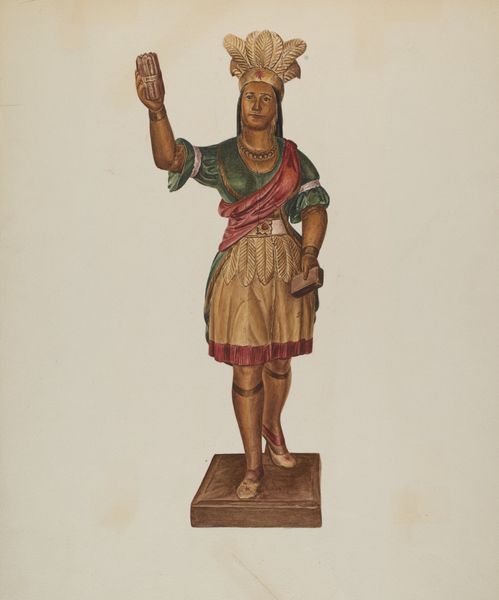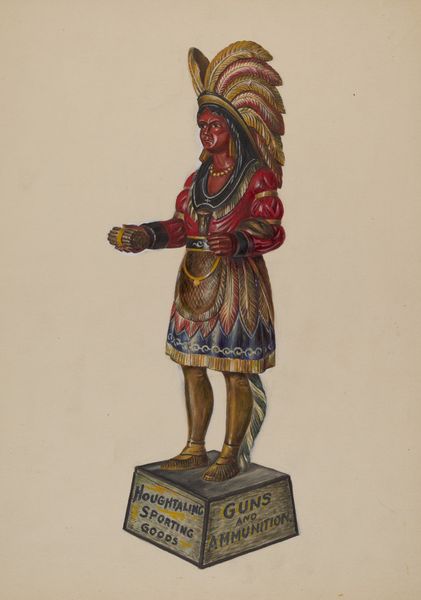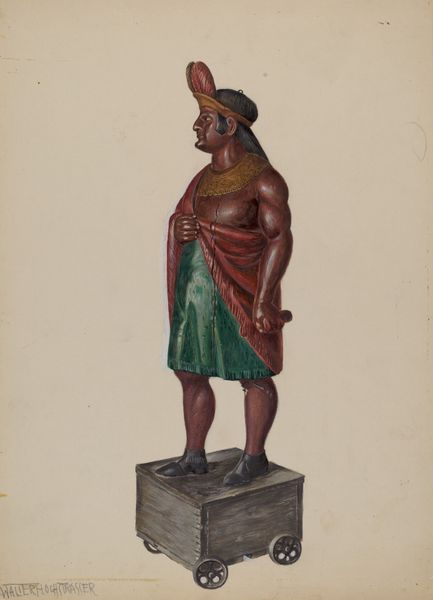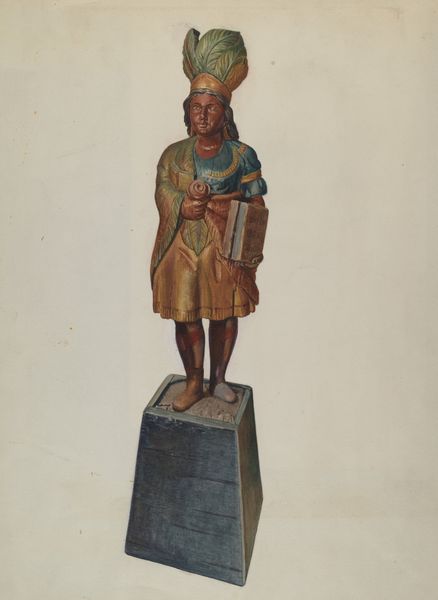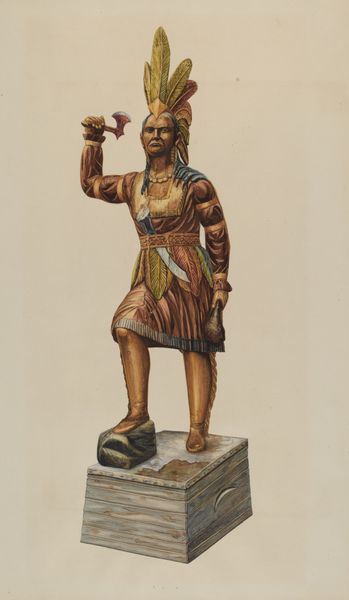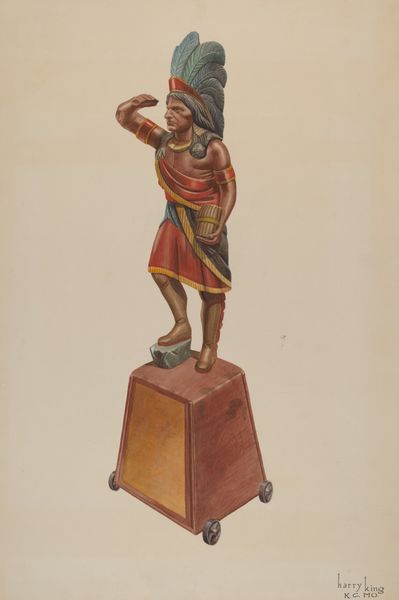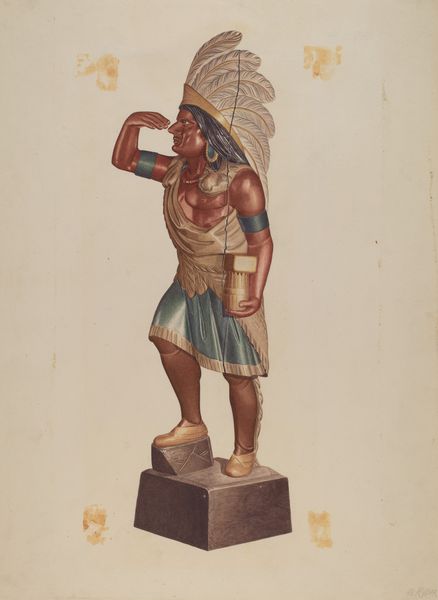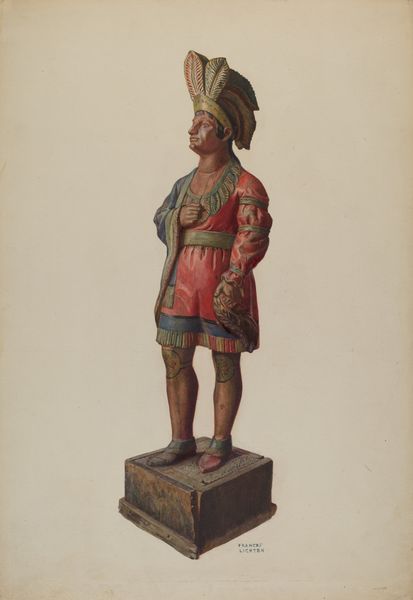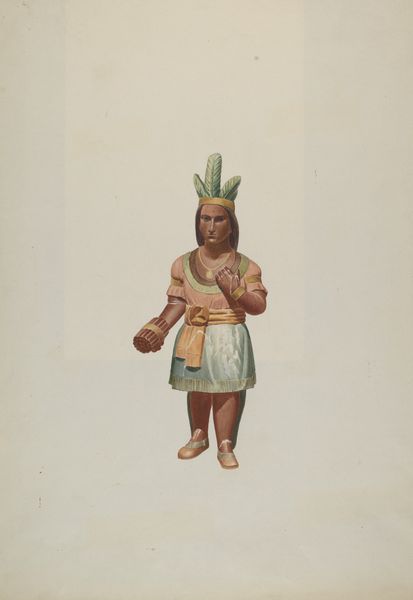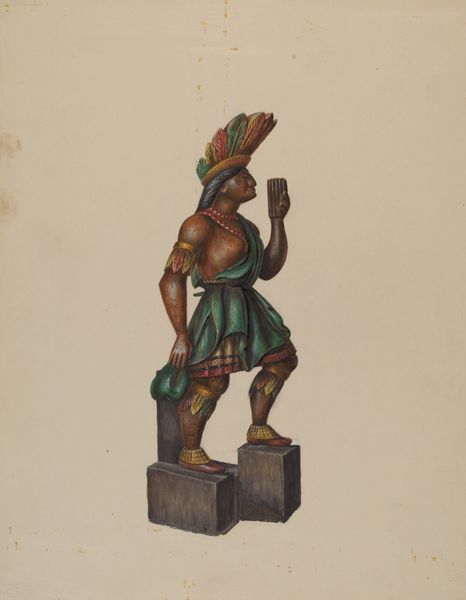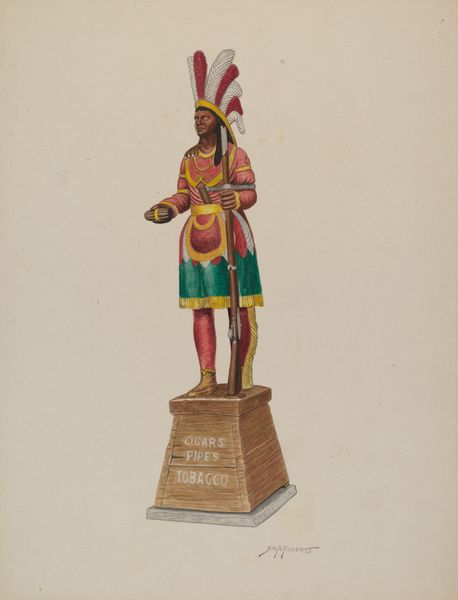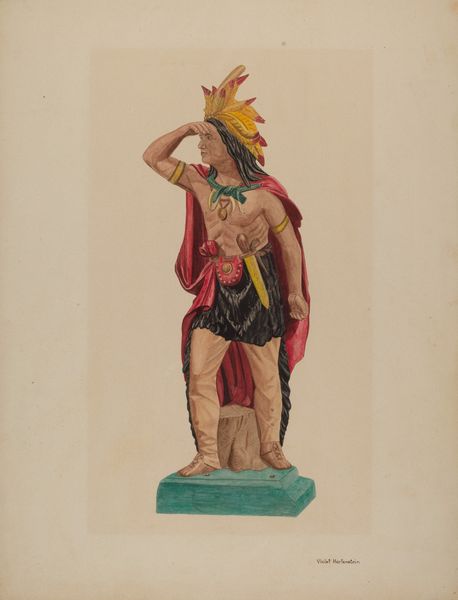
painting, watercolor
#
painting
#
figuration
#
oil painting
#
watercolor
#
portrait art
#
watercolor
Dimensions: overall: 48.2 x 22.9 cm (19 x 9 in.)
Copyright: National Gallery of Art: CC0 1.0
Curator: This is John Sullivan’s "Cigar Store Indian," likely crafted around 1937. It is a drawing incorporating painting and carving, which provides a powerful, immediate presence. Editor: Indeed. There's a striking, almost melancholic, quality to this depiction. The composition itself, the figure’s gesture—hand raised to the brow—creates an air of watchfulness and waiting. Curator: It's fascinating to consider the semiotics at play here. The upraised hand directs the viewer's gaze, but more importantly, it points toward a presumed vanishing point that exists far beyond the static display. There is an implied invitation into an abstracted distance. Editor: While also signifying "Indianness" as a fabricated commodity of commerce in tobacco shops. Consider how the use of wood and carving emphasizes a particular kind of labor—the roughhewn nature versus smooth manufacture speaks volumes. Its materiality serves an economic function, drawing potential customers to the product with implications of cultural significance but stripped of meaningful representation. Curator: And yet, the careful application of paint—note the ochre tonalities of the skin, the verdant greens and yellows in the headdress—lends a complexity, resisting a purely reductionist view. Editor: I’m more interested in the process; it speaks of an artisan engaging with available resources within the constraints of commercial demand. This labor and object exist firmly within the realms of both making and consumption, high and low. Curator: Perhaps, but in its formal execution, it evokes something deeply symbolic. The stoic pose and simplified, almost iconic presentation tap into universal archetypes of Indigenous nobility or maybe dispossession and the romantic ideal. It's undeniably complex, structurally and conceptually. Editor: Exactly—complex because its very creation necessitates exploitation of cultural heritage for market needs. Sullivan’s sculpture reveals complex labor politics, highlighting how art is created and consumed in ways tied to social and economic exploitation, not timeless abstraction. Curator: Your reading pushes us to reflect upon the economic mechanisms inherent in such representations. Editor: And yours emphasizes the artwork’s power to signify, offering us very different routes of interpretation of art-making within economic structures.
Comments
No comments
Be the first to comment and join the conversation on the ultimate creative platform.
